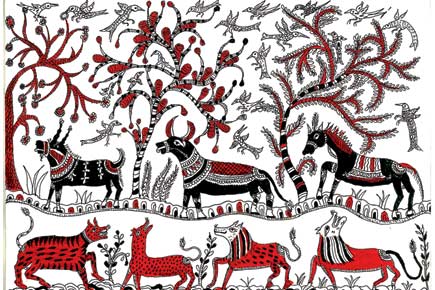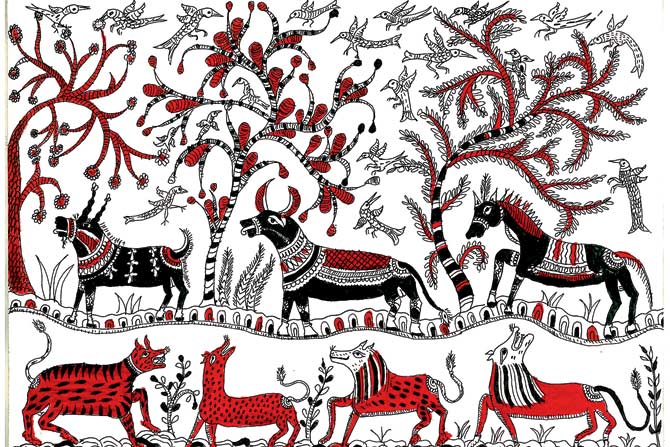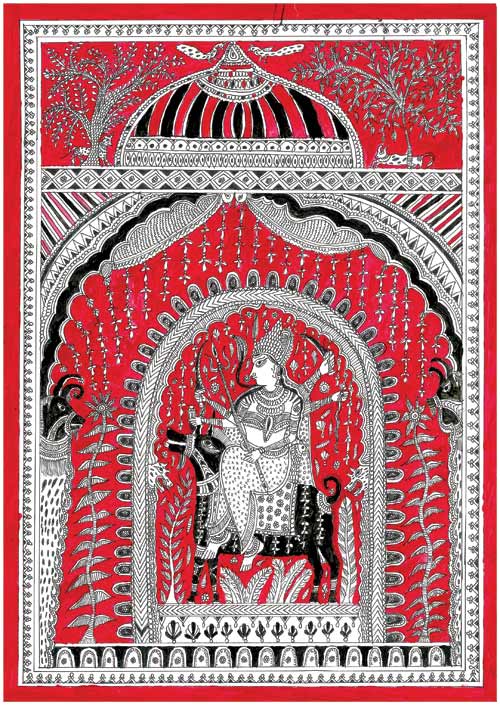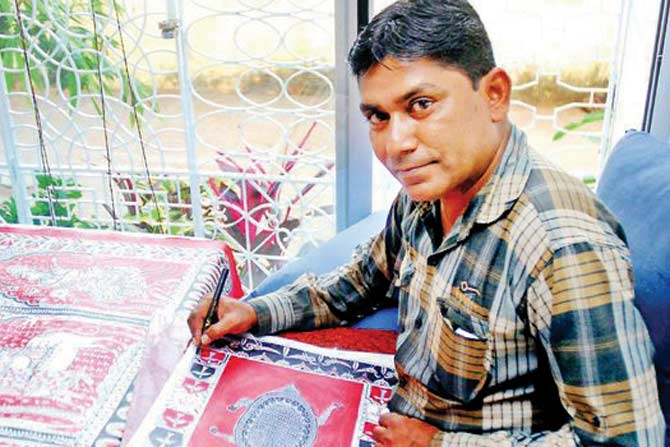Soak in vivid colours and intricate designs as a nomad artisan from Gujarat brings an ancestral worship art form at a city exhibition

Did you know that the Chitara families of the nomadic Vaghari community in Gujarat began creating the artful Chandarvo or Mata-ni-Pachedi (behind the Mother Goddess, literally translated) paintings as a form of worship since they were prohibited from entering temples for belonging to the lower caste? These cloth paintings featuring different forms of Mother Goddess or Mata acted as temporary outdoor shrines. The 300-year-old art, passed down generations, is only practised by 50-odd artists from the community today. Among the foremost is the 45-year-old Ahmedabad-based Jagdish Chitara, who will present his first solo exhibition, titled Chandarvo: Painted Shrines of Mother Goddess, starting Sunday.
ADVERTISEMENT

A painting uses forest animals as motif
Goddess glory
When he was 12, Chitara’s father introduced him to the ancestral craft, but he credits artist and reputed author Haku Shah for discovering his hidden talent. “As a kid, I would mainly fill colour in my father’s paintings. One day, Shah, who had come to meet my father, was impressed with a sketch that I had made of a goddess using mud. He asked me to keep practising and also taught me how to mix colours and perfect my figurines of goddesses and animals,” recalls Chitara. While previously, only khadi cloth was used for the paintings (some times four metres long), these days, artists work on paper and canvas too. At the exhibition-cum-sale, Chitara will display 60 pieces on paper, canvas and cloth (one is even three-feet tall), with prices starting at Rs 3,000 going up to Rs 50,000.

Meladi Mata, mother of dirt
Hand-painted or block-printed, the paintings feature a powerful, central image of Mother Goddess with stories from myths, legends, epics and folk traditions. Devotees who wish to invoke the goddess also commission the paintings to artistes. “Most of my work is hand-painted and it takes a month to make each one. I paint different goddesses including Meladi Mata, Bahuchar Mata and Khodiyar Mata with intricate temple and animal designs,” he shares.

Jagdish Chitara
Colour code
What makes the paintings unique is the use of original red and black natural dyes that the artiste creates himself. “Black is made from iron, jaggery and castor oil while red is derived by boiling alum powder and mixing it with flour. Once dry, the cloth painting is washed in the waters of the Sabarmati river to enhance the colours,” says the artist.
 Subscribe today by clicking the link and stay updated with the latest news!" Click here!
Subscribe today by clicking the link and stay updated with the latest news!" Click here!






